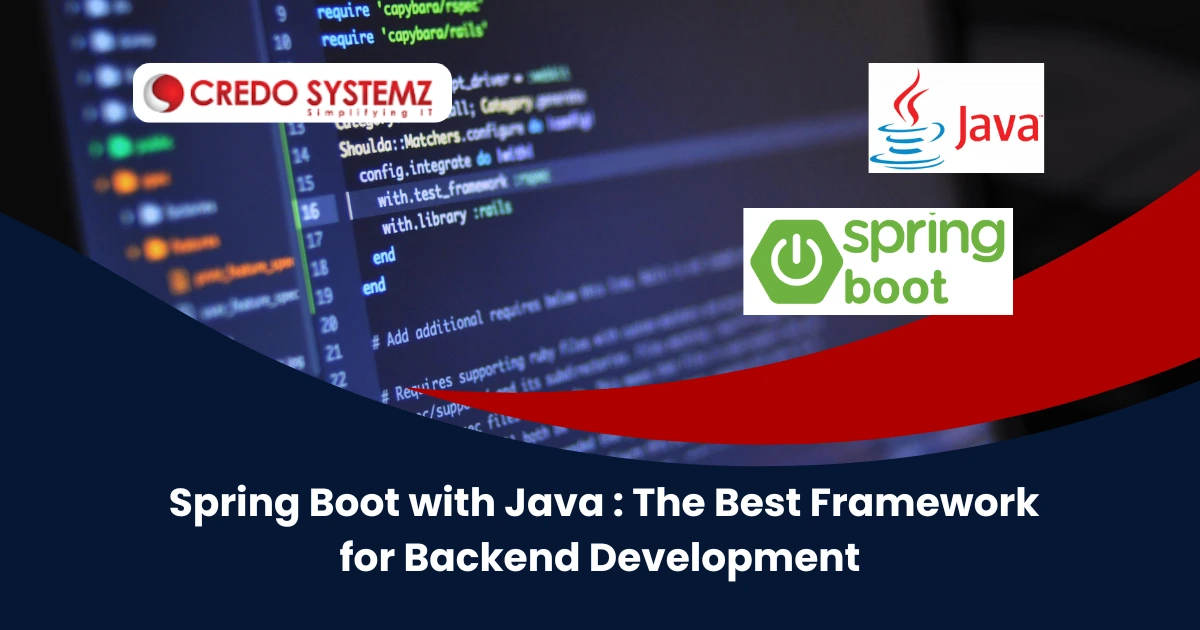
Introduction
In the software development field, Companies focus on building scalable, secure, and efficient backend systems. Spring Boot has emerged as the go-to framework for Java-based backend development. It is a preferred choice for developers to build enterprise-grade applications with its ease of use, powerful features, and extensive community support.
Spring Boot
Spring Boot is the widely used solid framework that simplifies the development of production-ready, reliable and scalable backend applications with minimal configuration.
key Features of Spring Boot
Easy Setup and Configuration: Spring provides a streamlined setup process and offers embedded servers to run applications without external configurations like Tomcat, Jetty, and Undertow.
- Microservices Ready: Spring Boot is ideal for building microservices architectures by integrating with Spring Cloud. It enhances microservices-based applications using features like circuit breakers, service discovery, and API gateways.
- Powerful Dependency Management: The Spring Initializr tool generates the project structure quickly. Spring Boot Starter dependencies are used to simplify dependency management.
- Built-in Security Features: Spring Security provides authentication, authorization mechanisms and supports OAuth2 and JWT.
- Database Integration: Spring Data JPA is useful for database operations as it makes it easier with minimal configurations. Spring Boot is compatible with various databases like MySQL, PostgreSQL, MongoDB, and Redis.
- Robust API Development: To create RESTful APIs, Spring boot provides an intuitive way using Spring Web MVC. It offers built-in support for JSON serialization and deserialization.
- Auto Configuration & Convention Over Configuration: Spring Boot’s auto-configuration feature reduces manual setup and handles the configuration files. So that developers can focus on business logic.
- Enhanced Monitoring and Logging: Spring Boot Actuator provides built-in monitoring endpoints and supports integration with Prometheus, Grafana, and ELK Stack.
Key Components of a Spring Boot Application
The important components of a Spring Boot Applications are:
- Spring Boot Starter Dependencies
- Spring Boot Annotations
- Embedded Servers
Spring Boot provides pre-configured dependencies called starters, such as:
- spring-boot-starter-web is suitable for building REST APIs.
- spring-boot-starter-data-jpa is used for database integration.
- spring-boot-starter-security handles authentication and authorization.
Spring Boot leverages annotations to simplify development, like:
- @SpringBootApplication – To perform the main entry point for the application.
- @RestController – Defines RESTful web services.
- @Autowired – Dependency injection in Spring Boot.
Spring Boot comes with embedded servers to eliminate the need for an external application server like,
- Tomcat
- Jetty
- Undertow.
Steps to Build a Simple Spring Boot Application
Step 1: Set Up the Project
To create a new Spring Boot project, use Spring Initializr (https://start.spring.io/) with dependencies like:
- Spring Web
- Spring Boot DevTools.
Step 2: Create a Main Application Class
Step 3: Create a Simple REST Controller
Step 4: Run the Application
Execute the following command:
Conclusion
To sum up, Spring Boot is one of the most popular frameworks for backend development in Java. It is the best choice for building modern applications because of its simplicity, scalability, and enterprise-level features. To develop monolithic applications, microservices, or cloud-native solutions, learn the skills of Spring boot by joining our spring boot training in Chennai. Spring Boot provides an efficient development environment with its vast ecosystem and active community.
Join Credo Systemz Software Courses in Chennai at Credo Systemz OMR, Credo Systemz Velachery to kick-start or uplift your career path.
